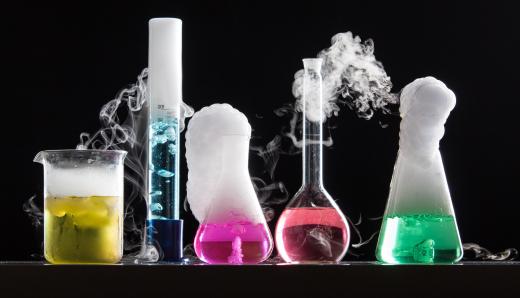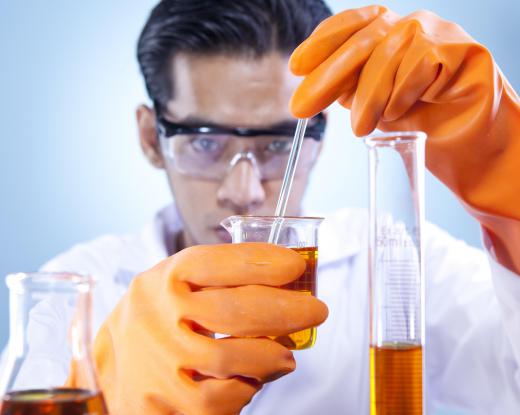What is a Chemical Change?
A substance undergoes a chemical change when its molecular structure is changed by either adding energy to the substance or by mixing two substances together. In either case, the chemical bonds within the atomic structure are broken and reattach themselves to form another substance. The new substance usually has different physical and chemical properties than the original.
There are two types of changes in chemistry. A physical change is when the form of the substance changes, such as the normal phase changes in water as a result of temperature. As the temperature increases from the freezing point of water, it changes from the solid form of water, ice; to the liquid form, water; to the gaseous form, steam.

A chemical change happens when one substance is transformed into another substance at the atomic level, and chemical reactions can be classified into four groups. A synthesis reaction occurs when two or more simple materials are combined to make a third, more complicated material. A decomposition reaction is the breaking down of a more complex substance into its simple parts. In single-replacement reactions, one element has replaced another element in a more complex material to create a new substance. Double-replacement reactions are similar to single-replacement reactions, only with two elements in one material replacing two elements in another compound to make the final material.

The laws of mass and energy conservation state that neither mass nor energy is created or destroyed, only changed to a different state. Thus, chemical changes are also classified by what happens to energy as a result of the reaction. Endothermic reactions absorb energy, usually heat or electrical energy. Exothermic reactions produce energy, causing the substance to feel hot as a result of the energy coming from the chemical bonds of the substances.
There are several ways to tell whether a chemical change has occurred. A change in the color of a substance can signify a chemical change has taken place. The changing colors of leaves in autumn, the reddish-brown of rust and the browning of the flesh of an apple are all examples of chemical changes being shown by color changes in a substance.
A change in the smell of a substance can also be a sign that a chemical change has taken place. The sulfuric smell of rotten eggs and the smell of spoiled milk are signs that the eggs and the milk have undergone chemical reactions. While the smell is, perhaps, more noticeable, there also may be other, visible indications of such change.
Unlike physical changes, chemical changes are irreversible. Smashing an aluminum can with your foot is a physical change. Theoretically, it is possible to remove the dents and wrinkles put into the aluminum and bring it back to its original state. Burning a piece of paper is a chemical change. Once it’s burned, it can’t be unburned.
AS FEATURED ON:
AS FEATURED ON:












Discuss this Article
Post your comments